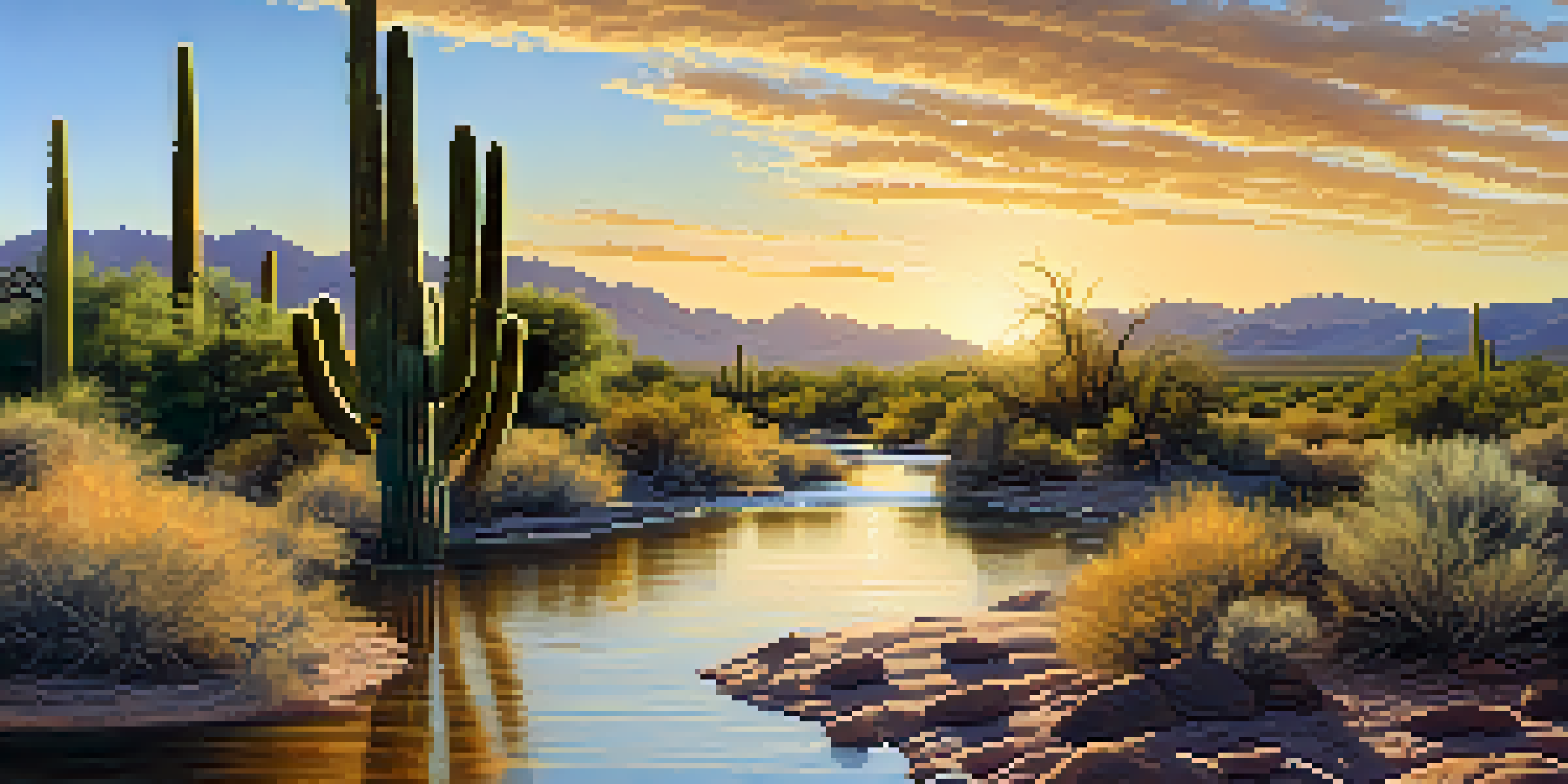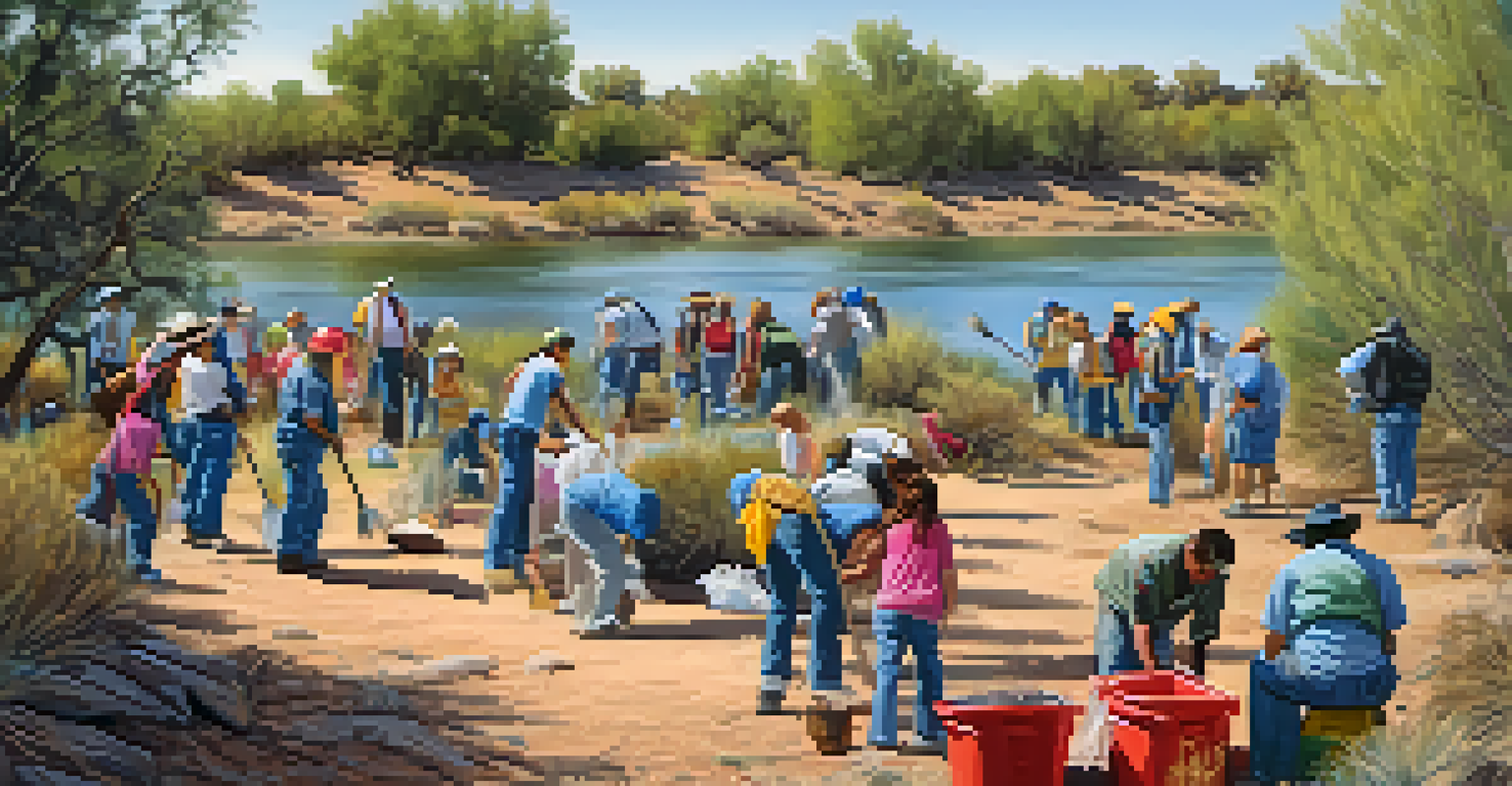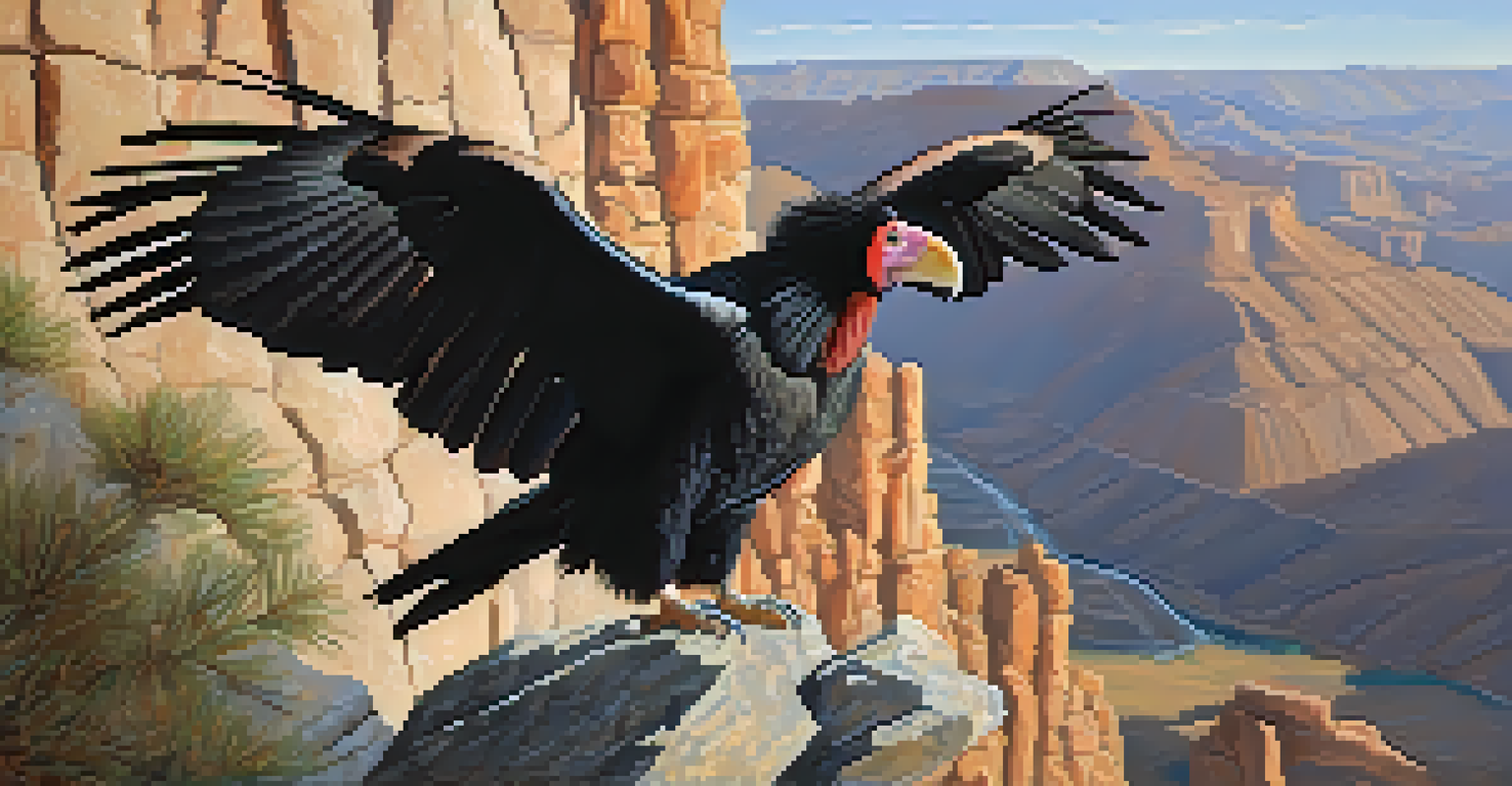Biodiversity Loss in Arizona: Threats and Conservation Efforts

Understanding Biodiversity and Its Importance
Biodiversity refers to the variety of life forms on Earth, including plants, animals, fungi, and microorganisms. In Arizona, this diversity is particularly rich due to its varied ecosystems, from deserts to forests. Each species plays a unique role in maintaining the balance of the environment, contributing to ecosystem services like pollination, water purification, and climate regulation.
In nature's economy, the left hand does not know what the right hand is doing.
When we lose biodiversity, we not only harm individual species but also jeopardize the health of entire ecosystems. For example, the loss of a single pollinator can impact food production for multiple plants, leading to a cascading effect throughout the food chain. In Arizona, this is a pressing concern, as many species are facing threats that could diminish their populations.
Recognizing the importance of biodiversity allows us to understand why conservation efforts are critical. Protecting diverse ecosystems ensures that we maintain the natural processes that sustain life, support agriculture, and provide recreational opportunities for future generations.
Key Threats to Arizona's Biodiversity
Arizona's unique biodiversity is under threat from a variety of factors, including habitat loss, climate change, and invasive species. Urban development, agriculture, and mining activities often lead to the destruction of habitats that countless species depend on for survival. As more land is developed, the natural habitats become fragmented, making it difficult for species to thrive.

Climate change poses another significant threat, altering weather patterns and affecting the availability of water resources. Rising temperatures can lead to droughts, which negatively impact both flora and fauna. For instance, some native plants may struggle to survive in a hotter climate, which in turn affects the animals that rely on them for food and shelter.
Biodiversity is vital for ecosystems
The variety of life forms supports essential ecosystem services that maintain environmental balance.
Invasive species are also a growing concern in Arizona's ecosystems. These non-native species can outcompete local flora and fauna for resources, often leading to declines in native populations. An example is the bullfrog, which preys on smaller native amphibians, disrupting the local food web and diminishing biodiversity.
The Role of Conservation Organizations
Conservation organizations play a vital role in addressing biodiversity loss in Arizona. These groups work tirelessly to protect endangered species and restore habitats that have been damaged by human activity. Through research, advocacy, and community engagement, they help raise awareness about the importance of preserving biodiversity.
The greatest threat to our planet is the belief that someone else will save it.
Many organizations focus on specific species or ecosystems, implementing targeted conservation programs. For instance, organizations may conduct breeding programs for endangered species like the California condor, which once faced extinction. By working collaboratively with government agencies and local communities, these groups can maximize their impact on conservation efforts.
Moreover, conservation organizations often engage in educational initiatives, teaching local residents about the significance of biodiversity. By fostering a sense of stewardship, they empower communities to take action and participate in conservation efforts, ensuring a collective approach to safeguarding Arizona's rich natural heritage.
Community Involvement in Conservation
Community involvement is crucial for successful conservation efforts in Arizona. Local residents can contribute in various ways, from participating in clean-up events to volunteering with conservation organizations. This grassroots approach not only enhances biodiversity initiatives but also fosters a deeper connection between people and nature.
Engaging communities in conservation efforts also helps to build awareness about the threats facing local ecosystems. Educational programs in schools, workshops, and outreach campaigns can inform residents about how their actions impact biodiversity. For example, learning about the importance of native plants can motivate homeowners to create sustainable gardens that support local wildlife.
Community involvement boosts conservation
Active participation from local residents enhances conservation efforts and fosters a connection to nature.
Furthermore, community-led conservation projects can lead to innovative solutions tailored to local needs. When people take ownership of conservation initiatives, they are more likely to invest time and resources into preserving their natural surroundings, ultimately contributing to a more sustainable future for Arizona's biodiversity.
Legislation and Policy Changes for Conservation
Legislation plays a critical role in the conservation of biodiversity in Arizona. Laws and policies can help protect endangered species and their habitats, ensuring that conservation efforts are supported at the governmental level. This includes regulations that limit land development in sensitive ecological areas and provide funding for habitat restoration projects.
In Arizona, the implementation of the Endangered Species Act has been pivotal in protecting native species. This law allows for the identification and conservation of species at risk of extinction, providing a framework for recovery efforts. The collaboration between federal, state, and local agencies facilitates effective management of these initiatives.
Ongoing advocacy for stronger environmental policies is essential for the future of Arizona's biodiversity. Engaging with lawmakers and supporting conservation-friendly legislation can lead to significant changes in how natural resources are managed. By encouraging public participation in the legislative process, individuals can contribute to the preservation of their state's rich biological heritage.
Success Stories in Biodiversity Conservation
Despite the challenges, there are numerous success stories in Arizona's biodiversity conservation efforts. One notable example is the recovery of the California condor, which faced near extinction in the 1980s. Through extensive breeding programs and habitat protection measures, the population has slowly increased, showcasing the power of targeted conservation strategies.
Another success story involves the restoration of native riparian habitats along Arizona's rivers. These efforts have led to the resurgence of various fish and bird species that depend on healthy waterways. Collaborative initiatives involving local communities, government agencies, and conservation organizations have proven effective in revitalizing these essential ecosystems.
Legislation is key for protection
Effective laws and policies are crucial for safeguarding endangered species and their habitats in Arizona.
These success stories highlight the importance of commitment and collaboration in conservation efforts. While challenges remain, they serve as a reminder that with the right strategies and community involvement, it is possible to turn the tide on biodiversity loss and create a more sustainable future for Arizona's unique ecosystems.
How You Can Help Protect Arizona's Biodiversity
Protecting Arizona's biodiversity starts with individual actions that can collectively make a significant impact. Simple steps like reducing water usage, supporting local farmers, and choosing native plants for landscaping can contribute to healthier ecosystems. Every small change in our daily habits can help reduce our ecological footprint and support local wildlife.
Volunteering with conservation organizations is another great way to get involved. Many groups offer opportunities for individuals to participate in habitat restoration projects, clean-up events, and educational programs. By dedicating your time and effort, you can help make a difference in your community while learning more about Arizona's unique biodiversity.

Lastly, staying informed about biodiversity issues and advocating for conservation can amplify your impact. Share your knowledge with friends and family, engage in discussions about environmental policies, and support initiatives that protect natural habitats. Together, we can all play a part in ensuring that Arizona's rich biodiversity thrives for generations to come.